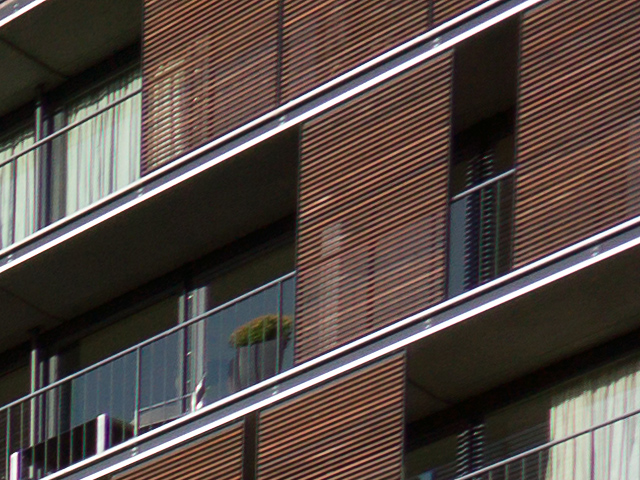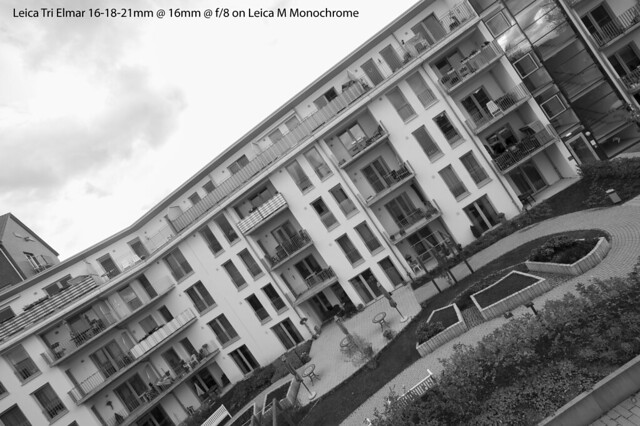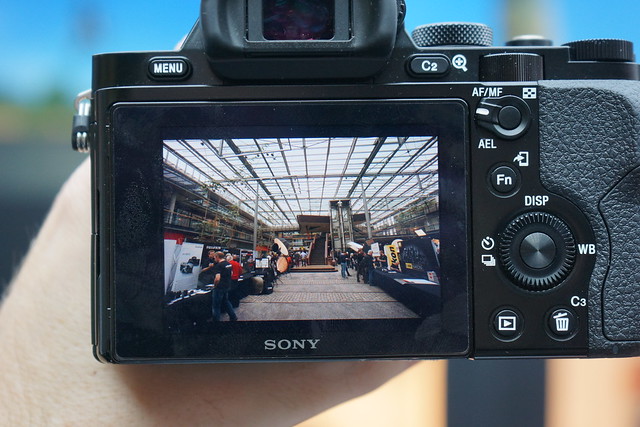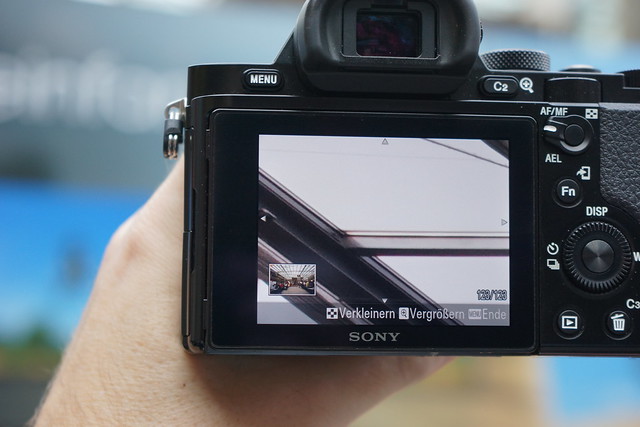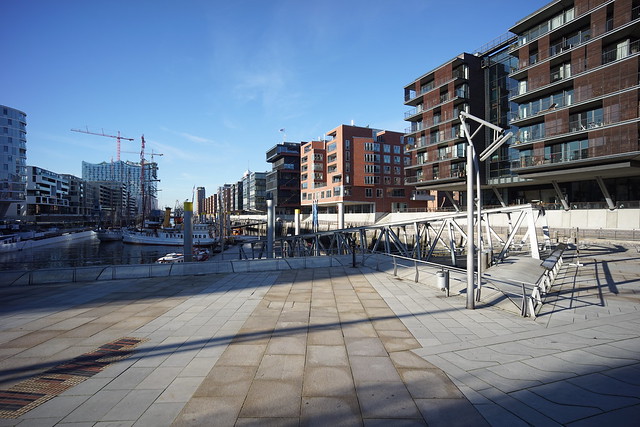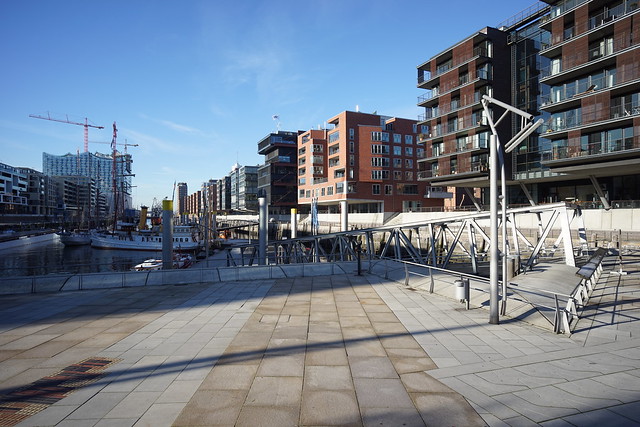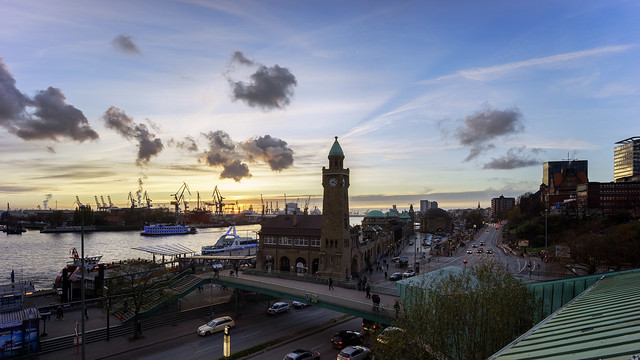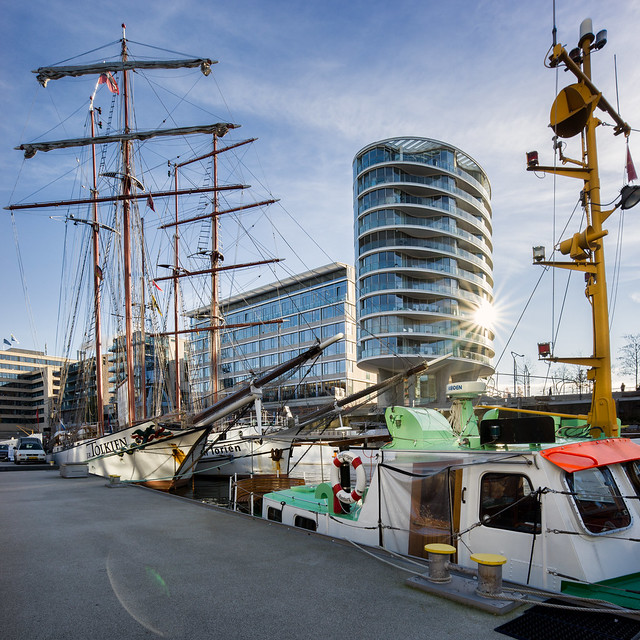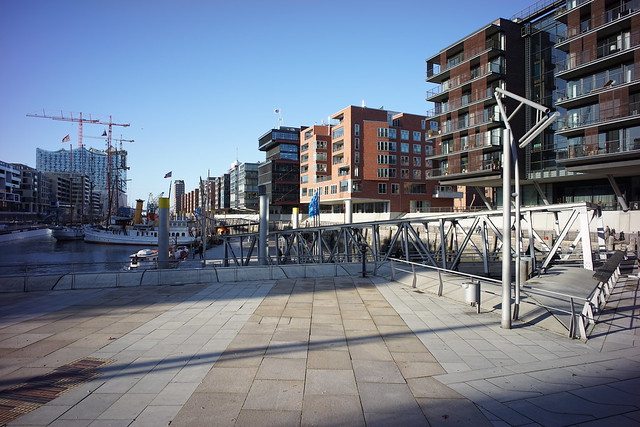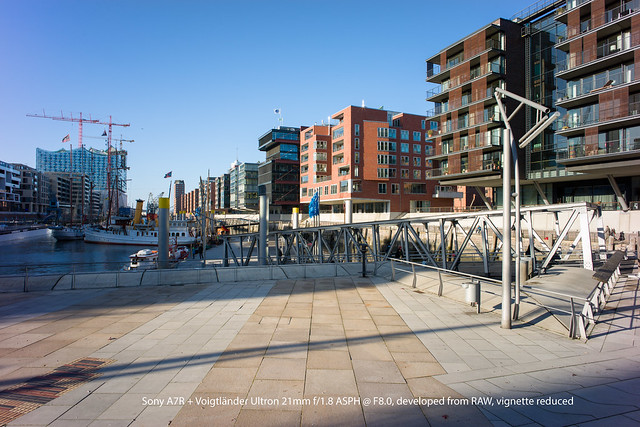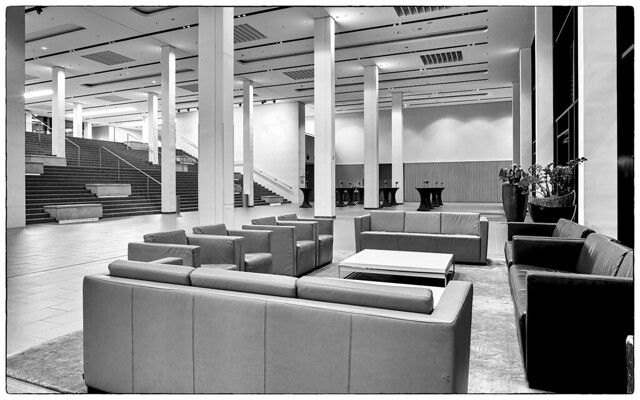If you visited this article earlier, you may want to jump directly to the UPDATE.
Oct./Nov. 2013 - If you followed all that buzz and bashing on the new mirrorless fullframe cameras from Sony, the A7 and A7R (also named as ILCE-7 and ILCE-7R), you may have got the impression that these cameras are not suited to be used together with wide ange M-mount lenses from Leica, Zeiss and Voigtländer. My conflicting message is, that it will work perfectly fine, if you choose the right lens.
You propably saw many articles like the "torture test" of Ron Sheffler, who came to the conclusion "Results on the a7 are for the most part disappointing. All I can surmise
at the moment is that the toppings on the a7′s sensor work against
achieving optimal (or in some cases, good enough) results with the
rangefinder lenses I had available for this test". You propably also read Steve Huff's 1st impressions coming to the conclusion "But seriously, if you are primarily an ultra wide Leica M lens shooter, you may want to skip these bodies.".
Before going into detail of my conflicting message,
let me say that I really appreciate the work of all these guys and from their point of view, they did'nt tell you anything wrong. But what was their point of view based on so far? If you take a closer look at the wide angle lenses tested so far on the A7 and A7R, you may recognize that all these lenses were designed in the "analog age" without taking into account additional requirements of current digital sensors. Lenses with a symmetrical design like the Zeiss Biogons or the Voigtländer Super Wide Heliars have their rear lens element located very close to the sensor. If it has also a small diameter, as a result the rays of light hit the borders and edges of the full frame sensor in a steep angle. Depending on the thickness of filters and other layers on top of the photodiodes, this may produce effects like "color shift" (purple edges) or even "edge smearing" (blurry edges). The more telecentric the lenses are designed, the less the image quality will suffer from these disturbing factors.
Wide angle lenses for DSLRs will not produce these problems but as they are designed to bridge the gap of a mirror box, they have a very complex design and need an additional adapter that is quite long. I am quite sure, you will find a combination like this unsuitable:
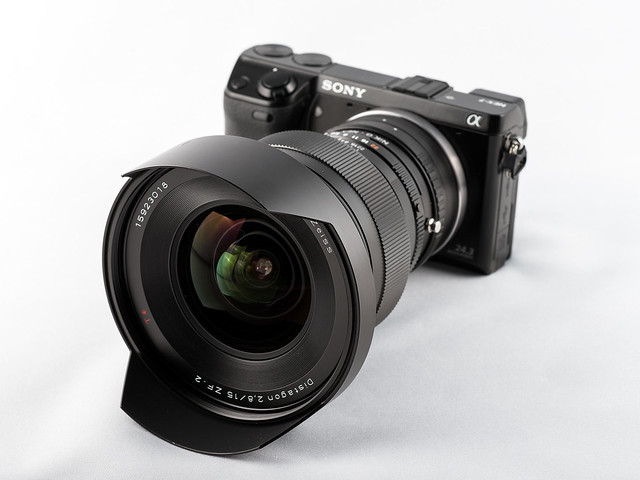
Zeiss Distagon T* 2.8/15 ZF.2 on Sony NEX-7
But there are some newer M-mount wide angle lens designs that provide a good compromise between size and image quality. One of the more affordable lenses is the Voigtlander Ultron 21mm f/1.8. Another (but more costly) lens that also has a more telecentric design is the Leica Wide Angle Tri Elmar 16-18-21mm f/4.0 ASPH, also called the "WATE".
When the NEX-7 appeared on the market, it also triggered a desperate search of adaptable wide angle lenses that do not produce color shift and edge smearing on its sensor. One of these lenses was the WATE but propably no one found it's price tag suitable for a mid class APS-C sensor camera. Fortunately the situation has changed meanwhile. Now we have the very flexible and excellent SEL1018 10-18mm ultra wide angle zoom from Sony and the Zeiss Touit 12mm f/2.8 wide angle prime lens but their image circles only cover the APS-C sensor (and at 13-14mm a bit more).
Before I could get my hands on the A7R, I made a quick size comparison of the WATE to the Sony 10-18mm f/4 OSS on the NEX-7:
In this comparison you can see that both lenses (the WATE including the M-to-E-mount adapter) have the same length but the WATE - although covering the full frame - is slimmer due to the abstinence of AF motor and OSS.
Before taking a closer look at results of the WATE on the Sony A7R, I wanted to get an idea, which results the WATE can produce on a Leica M Monochrom (MM). As this camera has a pure b/w 18 MP sensor without a bayer color filter array, you can compare sharpness with results of a 24 MP color sensor. But as the MM has no low pass (AA) filter, no color filters, the photodiodes are located quite near to the sensor's surface so edge smearing is reduced to a minimum and color shift is absent by default. So the results on the MM can be taken as a kind of reference for the optical design of the lens itself:
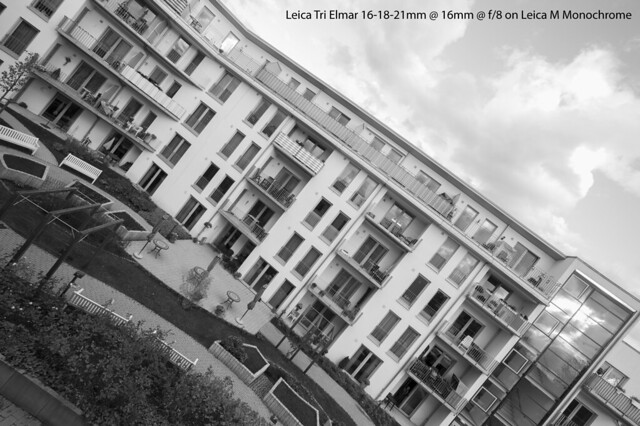
(click on the image for other sizes)
Now see the edge crops from the image above, 100% crop (actual pixels) from upper left edge:
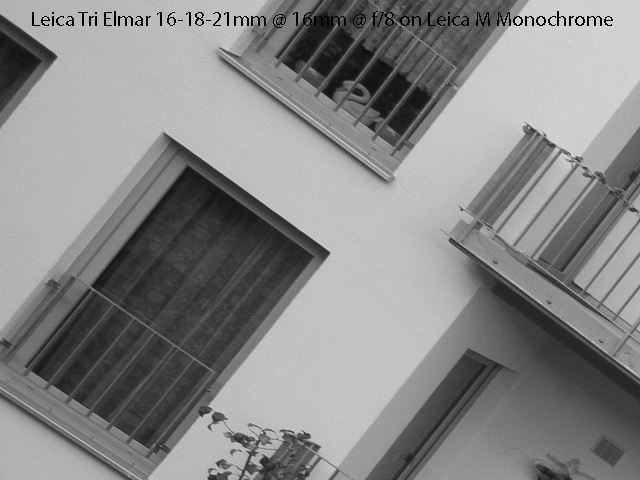
100% crop (actual pixels) from lower right edge:

...and the other way around:
These are crops from the image above:
100% crop (actual pixels) from lower left edge:
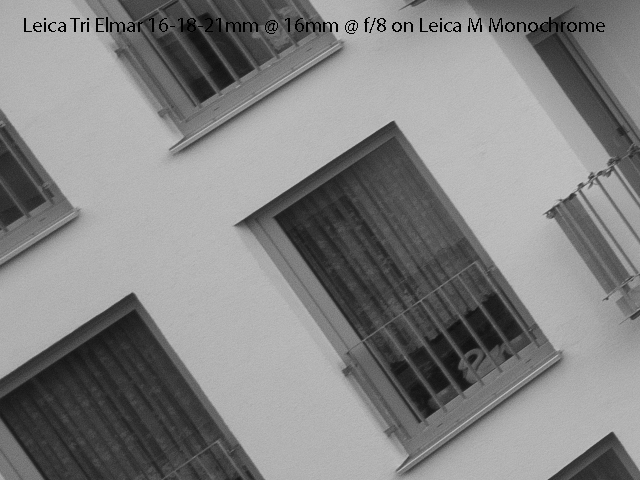
100% crop (actual pixels) from the upper right edge:
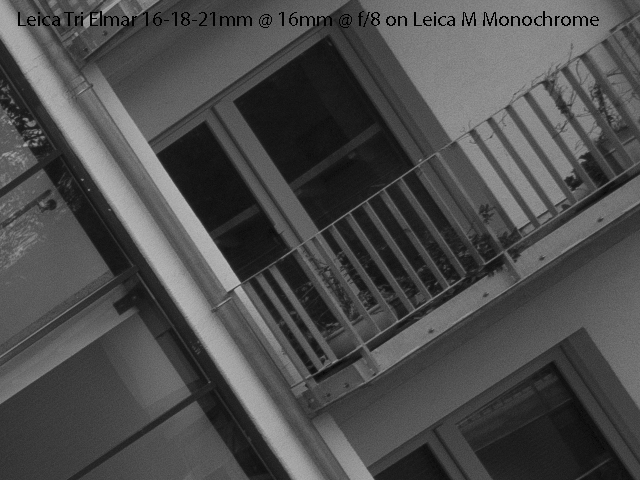
Your patience for reading so far will now be rewarded!
Before the official delivery of the A7/A7R started, I had a chance to get my hands on a pre production Sony A7R. Unfortunately it was presented with unfinished firmware (V0.9) and I was not allowed to insert my own memory card. But at least I had a chance to capture the results on the camera screen (click on the images for other sizes):
Leica wide angle Tri Elmar 16-18-21mm @ 16mm @ F8.0 on the Sony A7R:
Full zoom (actual pixels) into the left edge of this picture:
Leica wide angle Tri Elmar 16-18-21mm @ 21mm @ F8.0 on the Sony A7R:
Full zoom (actual pixels) into the center of this picture:
Full zoom (actual pixels) into the upper left edge of this picture:
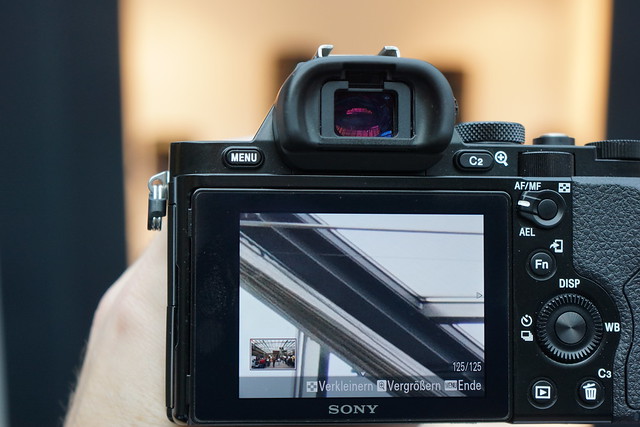
(click on the images to see larger sizes allowing to see the cropped area in the little preview overwie window)
Meanwhile I got a production version of the A7R with final firmware V1.01 and found some more time to shoot it with the Leica Tri Elmar 16-18-21mm f/4 ASPH ("WATE") and the Voigtlander Ultron 21mm f/1.8 ASPH.
Let us start with the WATE:
At f/8 it delivers with all focal lengths an image quality as good as the other top wide angle prime lenses from Leica across the whole frame. Common with other ultra wide angle lenses, you must accept some vignetting which the A7R does not compensate already by camera firmware like the M9 or M(240) do, so you have to do that in post processing.
The following examples show the results at 16mm and F8.0. First we look at the out-of-camera-JPEG:

(Click on the image to see other sizes)
Now the same picture developed from RAW (Adobe Camera RAW 8.3, release candidate 1). In ACR you find a lens correction profile for the WATE but this only corrects some distortion. Additionall some vignette correction was applied::
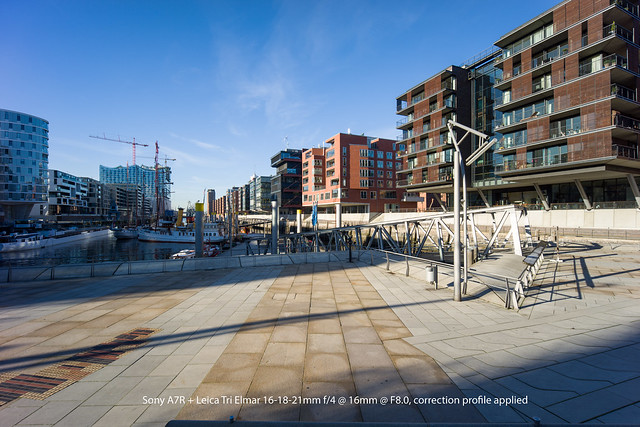
(Click on the image for other resolutions/sizes)
Let us take a look at some crops, first a 100% crop (actual pixels) from the center:
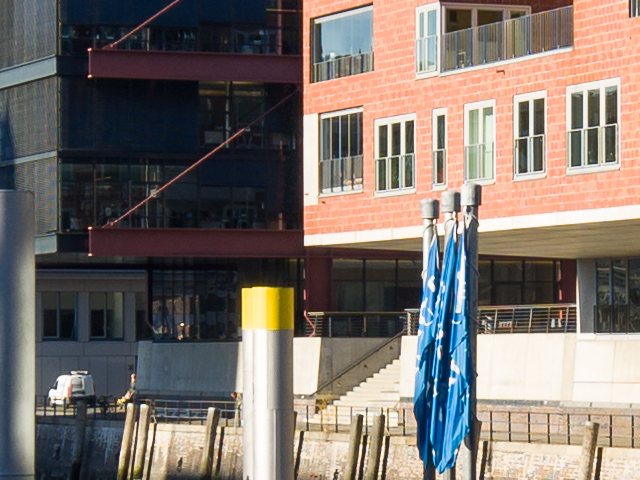
...and a 100% crop (actual pixels) from the upper left edge:
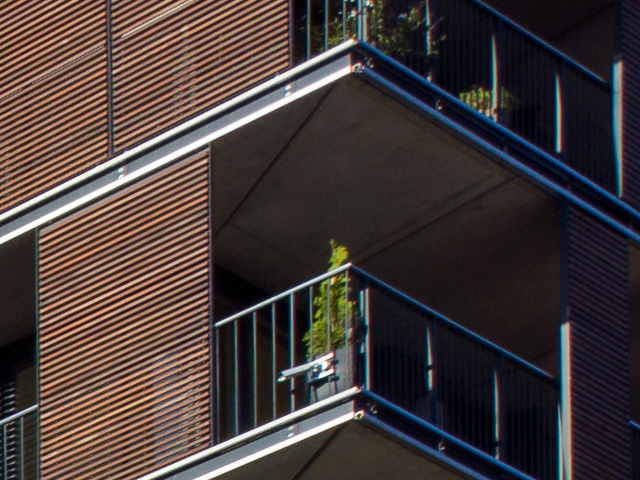
At 16mm the rear lens element has the closes position to the sensor, and here in particular situations you may discover a marginal color shift but so minimal that it can be easily corrected just by moving the purple color control. At another wheather situation I was not able to reproduce it:
Now the result at 18mm and F8.0, Again first the out-of-cam-JPEG...
...and the same image developed from RAW with ACR 8.3 RC1 using lens distortion profile and vignette reduction:
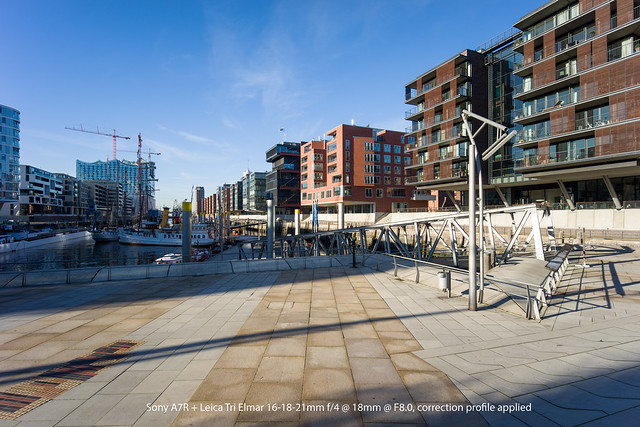
(Click on the image for other sizes/resolutions)
...and some crops, here the 1:1 crop from the center...
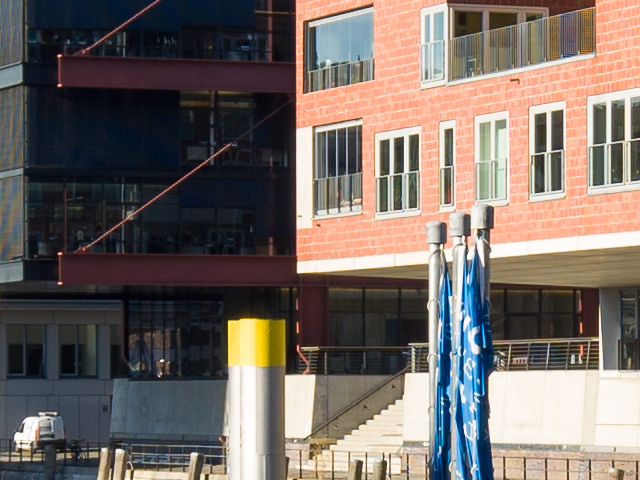
...and the 1:1 crop from the upper right edge:
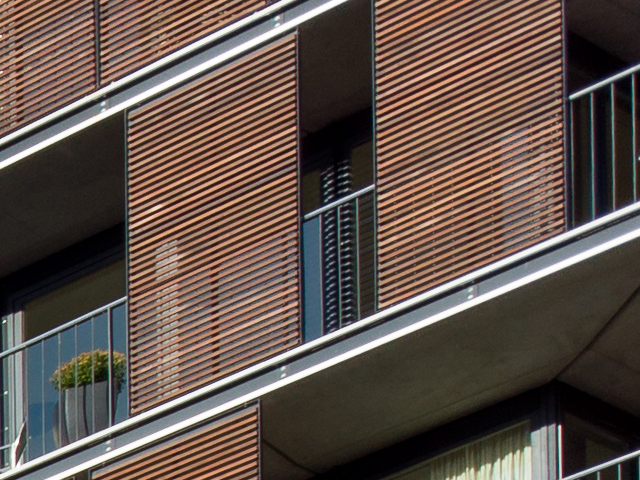
From the moiré in the 100% crop you can derive that this lens outperforms the resolution requirements of the 36 MP sensor in the center.
The result at 21mm and F8.0, again starting with the out-of-cam-JPEG...
...and the version developed from RAW using the ACR lens distortion correction profile and vignette reduction...
Also here you may be interested in the 100% crops - first the center crop (actual pixels)...
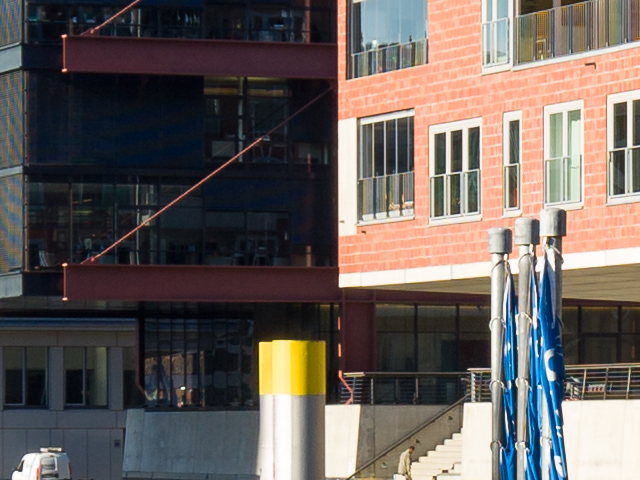
...and the 1:1 Crop from the upper right edge:
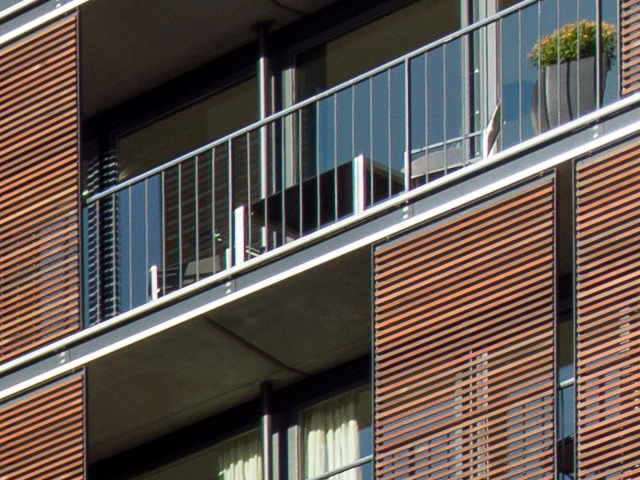
You find further out-of-cam JPEGs for aperture 4.0, 5.6 and 8.0 in this flickr album starting from here: Sony A7R + Leica Tri Elmar 16-18-21mm f/4 ASPH @ 16mm @ F4.0 out-of-cam-JPEG - DSC00198 | Flickr - Photo Sharing!
Before this motif get's too boring, let us relax with some other shots I took in the harbour city area of Hamburg with the WATE, all at 16mm, f/8:
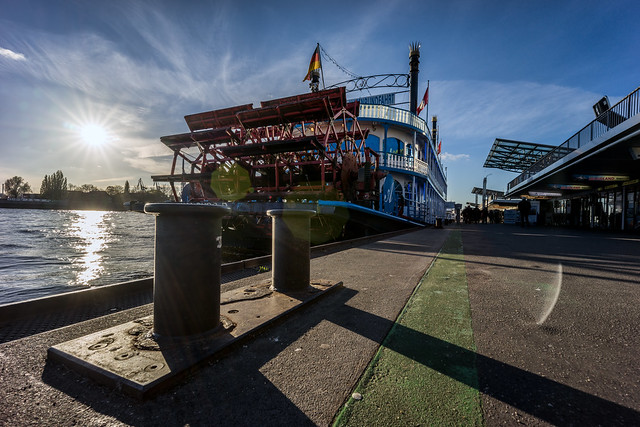
(Click on the images to see other resolutions/sizes)
If these results convinced you already and you started craving for used samples, let me add, that you do not need the additional 16-18-21mm finder ("Frankenfinder") when you put this lens on the Sony A7 / A7R. But even then you may be shocked by the prices of this lens. Perhaps it helps to put into perspective that this lens covers the whole range from 16mm to 21mm with a quality perfect like the best wide angle primes from Leica when stopped down to f/8 and even at f/4 almost on par with them. Compared to the price of a Leica M 240 or Monochrom body, you'll get the WATE almost for free on top of the A7R... ;-)
There may be left some used copies at reasonably prices at the moment but I expect rising prices...
Voigtlander Ultron 21mm f/1.8 ASPH
Another super wide angle lens that I found functional and interesting for the Sony A7 / A7R is the Voigtlander Ultron 21mm f/1.8 ASPH manufactured by Cosina, also called the "CV Ultron 21/1.8".
This is, how it appears on the A7R:
Again let us start with f/8.0 which is typically used for landscape / archtecture. First the original out-of-camera JPEG:
The same image developed from RAW (in ACR 8.3 RC1):
Also here the 100% crops (actual pixel) from the center...
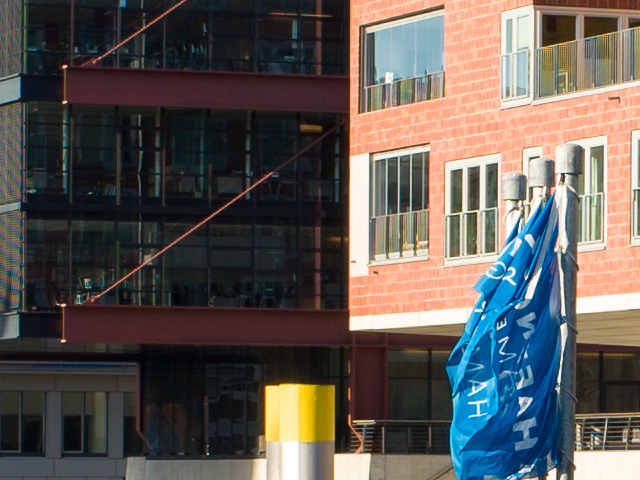
...and the 100% crop (actual pixels) from the upper right edge...
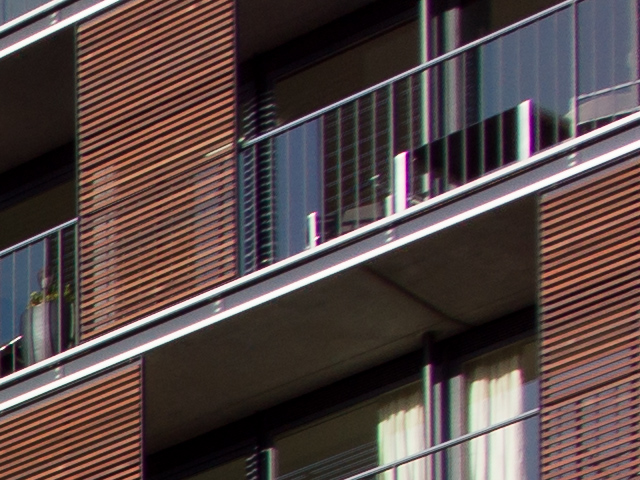
When you compare these crops to those from the WATE at 21mm, you will recognize that the CV Ultron 21/1.8 delivers about the same sharpness and contrast in the image center but looses quality in the edges, accompanied with some tendency to CAs.
It has a little bit more tendency to color shift on the A7 but marginal and easy to correct. You find further out-of-cam JPEGs for aperture 2.0, 2.8, 4.0, 5.6 and 8.0 in this flickr album: Voigtlander Ultron 21mm f/1.8 on Sony A7R - a set on Flickr
The advantage when using this lens is its better low light capability especially for indoor and video purposes, when demand for sharpness and resolution is a bit more relaxed. It gives you also some nice options to play a little bit with depth of field (DOF, sharp motif in front + blurred background) but from the following example you can determine that this lens suffers from a significant amount of field curvature (the blurred background gets sharper to the right borders again, although it should be even more blurred there):
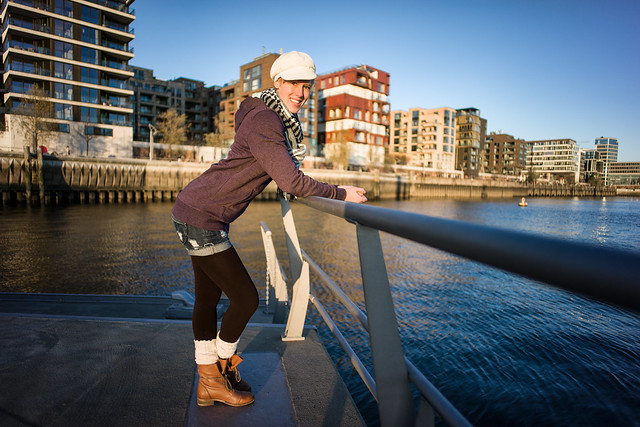
(Click on image for other sizes/resolutions)
F8.0:
F1.8:

(Click on image for other sizes/resolutions)
Conclusion so far:
Those who asserted that the Sony A7R is not suited to be used in combination with Leica (and other range finder) wide angle M lenses propably arrived at a too vague conclusion. In fact it depends on the particular lens design. Lenses with an extremely compact and symmetric design may produce problems with color shift and edge smearing even on the sensor of the A7R with shifted microlenses whereas lenses with a more telecentric design like the Leica WATE perform perfectly fine without color shift and without edge smearing on the A7R.
Top UWW-performer on the A7R ist the Leica WATE and the Voigtlander Ultron is a godd choice when lowlight capabilities and some potential to play with DOF is important for you. As reported from others, the Leica Elmarit 21mm f/2.8 seems to be a good choice on the A7 / A7R as well.
A last one with the CV Ultron 21/1.8 ASPH with some processing (Nik Silver Efex Pro, Topaz detail):
(Click on image to see higher resolutions/other sizes)
UPDATE 2:
As I got several requests to show how the NEX-7 with the SEL1018 UWA zoom compares to the WATE, here a photo taken under comparable conditions, developed from RAW using the lens correction profile provided by Adobe Camera Raw 8.3RC1:

(click on image for other sizes / resolutions)
100% crop (actual pixels) from center:

100% crop (actual pixels) from upper right edge:
